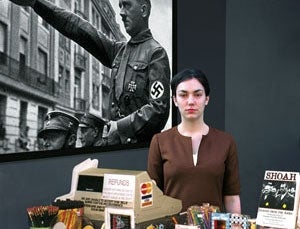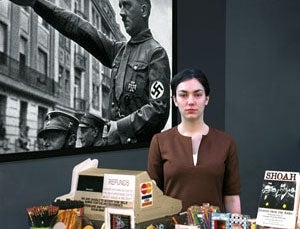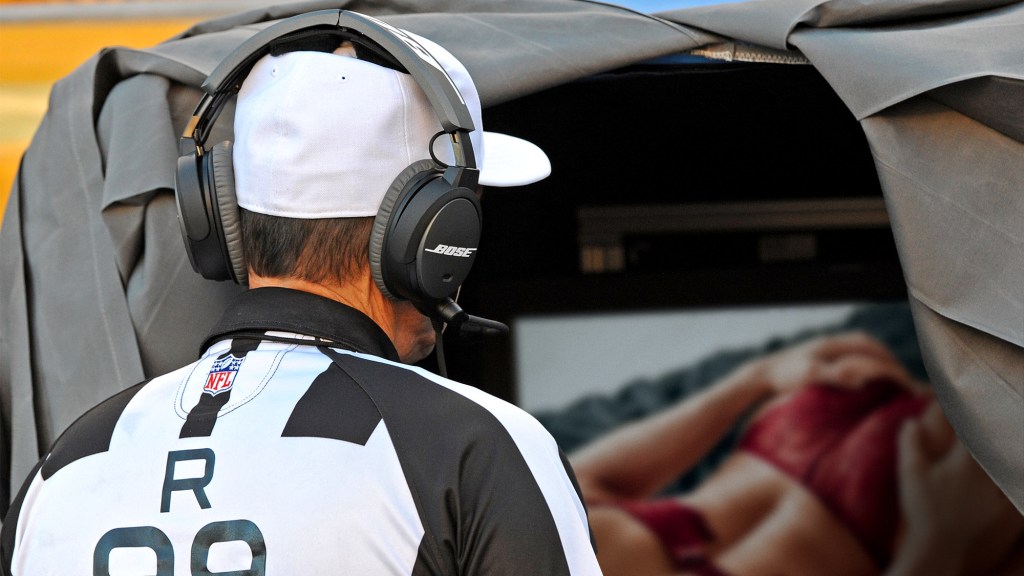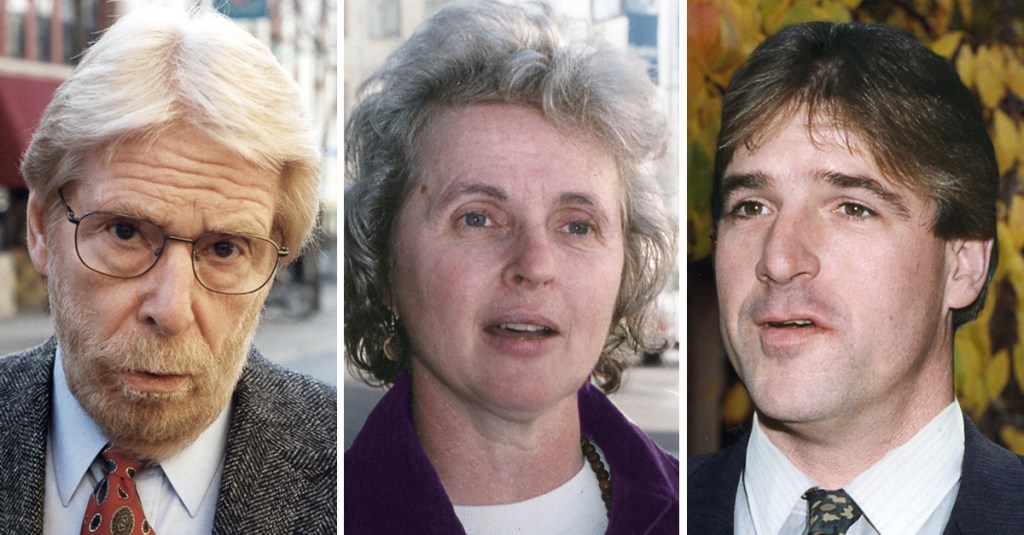WASHINGTON, DC—Alyssa Kaplan, 20, a cashier at the United States Holocaust Memorial Museum, had yet another in a seemingly endless string of depressing days Monday.

“You know how sometimes you get home from a really draining day at work and all you want to do is spend the night alone watching TV?” asked Kaplan, seated behind the gift-shop counter. “Well, I’ve pretty much done that every night since I started here three months ago.”
Though she said she strongly believes in the museum and its mission, Kaplan admitted she finds it exhausting to reflect upon the moral and theological questions raised by the Holocaust nearly nonstop for 40 hours a week.
“It doesn’t exactly put me in a social mood,” Kaplan said. “I mean, everyone on the staff gets along okay, but we don’t really goof around all that much. It’s not like we all finish up our shift here at the Holocaust Museum and then head over to Bennigan’s for happy hour.”
Kaplan starts her day at 8:30 a.m. with the “morning once-over” in the museum’s permanent exhibition, where she checks to see that all video and audio equipment is working. Divided into three parts, “Nazi Assault,” “Final Solution,” and “Last Chapter,” the exhibition features 70 video monitors and four small theaters that play endless loops of historic film footage and eyewitness testimonies of the horrors perpetrated by the Nazis against the Jewish people.
“Visitors hear actual Holocaust survivors describing what it was like to be at Auschwitz,” Kaplan said. “That section is directly on the other side of the wall of the employee bathroom, so I hear it every day during my two 15-minute breaks.”
During her pre-opening floor check, Kaplan also inspects the museum’s various exhibits and historical artifacts, making sure nothing is missing or out of place.
“Everything is bolted down or behind glass, so mostly we’re checking to see that the cleaning crew didn’t miss anything,” Kaplan said. “Yesterday, on the underside of a case displaying a child’s coat with a Star Of David sewn onto it, I found a big wad of gum. As I was cleaning it off, I read that the coat belonged to a little boy who died in Bergen-Belsen. That had me down for most of the afternoon.”
When the museum opens to the public at 9 a.m., Kaplan moves to the cash register in the museum store, where she rings up a broad selection of books, videos, and other items dealing with the worst genocide of the 20th century.
“When I first started here, I’d grab a book off the shelves to read during slow stretches,” said Kaplan, holding up copies of Annihilation Of Lithuanian Jewry and Cleansing The Fatherland: Nazi Medicine And Racial Hygiene. “For my own mental health, I had to give that up.”
As emotionally draining as the museum’s displays and gift-shop items are, they pale in comparison to the visitors themselves, Kaplan said.
“I get the people right after they’ve just spent two or three intense hours looking at the displays,” Kaplan said. “A lot of them file into the gift shop shell-shocked and just stagger around for a while, trying to get a grip before exiting the museum. The photography-book section is pretty secluded, and quite a few times I’ve found people squatting next to the oversized-hardcover shelf, just weeping.”
Such behavior is understandable, Kaplan said, as the museum causes many visitors, especially those of Jewish heritage, to confront long-buried feelings about their history and come to terms with man’s capacity for inhumanity toward his fellow man.
“It’s natural for them to want to talk about what they just saw,” Kaplan said. “I just wish 500 people a day didn’t want to talk to me about it. Sometimes, they don’t speak English and they still want to talk to me about it.”
A native of Potomac, MD, Kaplan said her reasons for applying for a job at the museum “made sense at the time.” After a year and a half at George Washington University, Kaplan decided last December to take a semester off, and she believed that working at the museum would be enriching, educational, and not too physically taxing.
“I didn’t want to waitress like I did last summer,” Kaplan said. “Then my mom’s friend told me about an opening here. I’m Jewish, so I figured this would be a great job for me. Now I’m starting to think that makes it not such a great job for me. I’m at Emotional-Dumping-Ground Zero here.”
Kaplan had thought about requesting a transfer to the museum’s ticket desk but reconsidered.
“The people at the ticket desk deal with the pushy tourists screaming about the long wait, and they get paid 75 cents an hour less,” Kaplan said. “Plus, they have to stare at that giant photo of Kristallnacht all day. If Anne Frank could survive in that attic all those years, I should be able to do five months behind this desk.”







